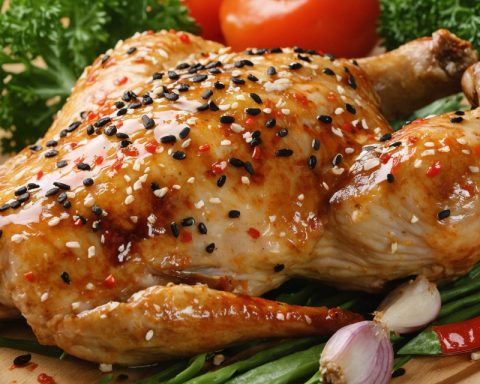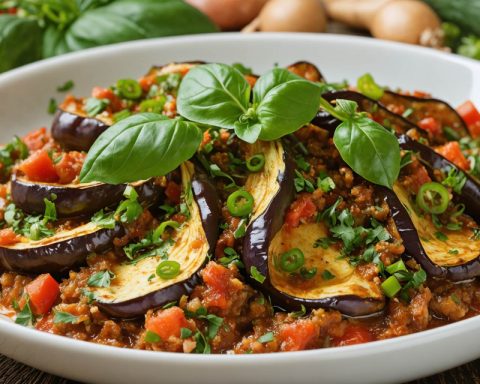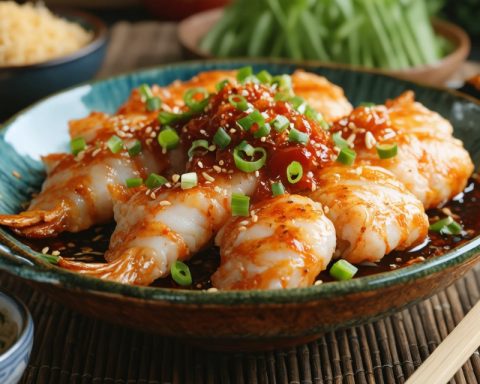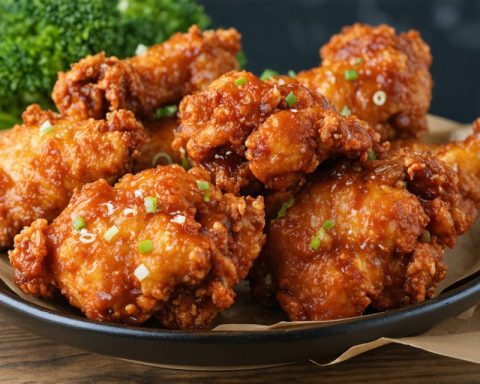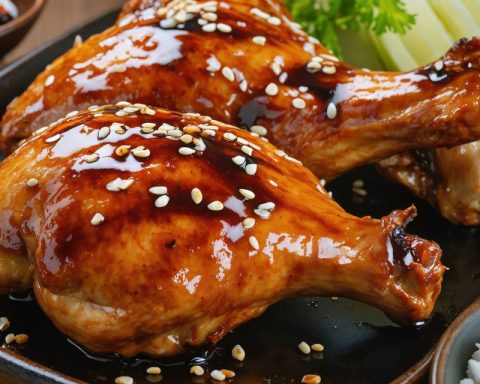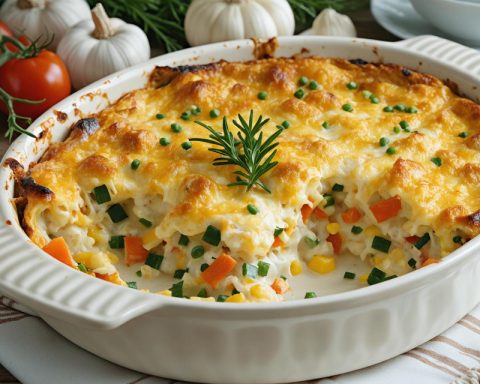Panang curry is not just a dish; it’s an adventure, a journey through the vibrant streets of Thailand where the air is rich with the heady aroma of coconut milk and simmering spices. Originating from Penang, Malaysia, but perfected in Thai kitchens, this curry marries the creaminess of coconut milk with the bold, aromatic allure of red curry paste, crowned with the sweet and savory notes of peanuts. Panang curry is more than a meal; it’s a celebration, ideal for warming heart and soul on a chilly evening or lending its spice to a summer gathering with friends. The richness of this dish is balanced with the right amount of sweetness and a hint of zest, creating a complex taste profile that leaves a lasting impression.
Ingredients:
– 500g chicken breast, thinly sliced
– 3 tablespoons Panang curry paste
– 400ml coconut milk
– 2 tablespoons vegetable oil
– 2 tablespoons fish sauce
– 2 tablespoons sugar (preferably palm sugar)
– 4 kaffir lime leaves, finely sliced
– 100g roasted peanuts, ground
– 1 red chili, finely sliced
– 1 cup Thai basil leaves
– Jasmine rice, for serving
Instructions:
1. Prepare the Chicken: Slice the chicken breast thinly for quick cooking and tender bites. Set aside.
2. Sauté the Curry Paste: In a large pan or wok, heat the vegetable oil over medium heat. Add the Panang curry paste, stirring constantly for about 2-3 minutes. This will release the irresistible aromas and deepen the flavors.
3. Creamy Base: Gradually add half of the coconut milk to the pan, stirring until well combined with the paste. Let it simmer on a gentle heat for around 5 minutes, allowing the creamy goodness to thicken slightly.
4. Add the Chicken: Introduce the sliced chicken to the fragrant base. Stir well, coating each piece with the curry. Cook for approximately 5 minutes, or until the chicken is cooked through and tender.
5. Enhance Flavor: Pour in the remaining coconut milk, fish sauce, sugar, and half of the ground peanuts. Stir gently, letting the flavors meld together. Simmer for another 10 minutes, stirring occasionally.
6. Infuse Herbaceous Notes: Add the kaffir lime leaves and red chili to the curry. Stir well and let the mixture simmer for another 5 minutes. The kaffir lime leaves will impart a citrusy fragrance, elevating the dish.
7. Finish and Garnish: Turn off the heat and stir in the Thai basil leaves, letting their aromatic oils disperse through the curry. Serve the Panang curry hot, topped with the remaining ground peanuts for an added crunch.
Cooking Tips:
– For a vegetarian version, swap chicken with tofu or a medley of mushrooms.
– Adjust the level of heat by adding more or fewer sliced chilies based on your preference.
– Utilize fresh ingredients wherever possible to ensure a vibrant and authentic flavor.
Serving Suggestions:
– Serve over steaming Jasmine rice to soak up the delicious curry sauce.
– Accompany with a side of fresh cucumber salad or papaya salad to refresh the palate.
– Pair with a light, crisp beer or a fruity white wine like Riesling to complement the curry’s richness.
This Panang curry is not only a sensory delight but a bridge to the rich cultural tapestry of Southeast Asia, bringing warmth and tradition to your dining table. Enjoy the journey with every spoonful!
Unveiling the Secrets Behind Panang Curry: A Dish Steeped in Culture and Controversy
Panang curry tantalizes more than just taste buds; it is a dish steeped in history, culture, and a bit of controversy. While often associated with Thailand, many are surprised to learn that its roots are intertwined with the Malaysian island of Penang. This geographical connection sparks a culinary debate: does Panang curry truly originate from Thailand, or is it a Malaysian dish at its core?
In exploring these origins, one might ask, “What distinguishes Panang curry from other Thai curries?” One key component is its distinct nutty undertone. Unlike the more fiery red or green curries, Panang curry incorporates ground peanuts, creating a subtly sweet, savory, and creamy texture—a hallmark that sets it apart.
But what is the role of kaffir lime leaves? These leaves, often overshadowed in common knowledge by more prominent spices, play a crucial role. Their unique citrus notes infuse the curry with an aromatic zing that lifts the entire dish, turning it from a simple meal to a fragrant symphony.
For those delving deeper into Thailand’s culinary heritage, the presence of Panang curry is more than a gastronomic delight; it is a dish of cultural fusion and adaptation, reflecting the socioeconomic exchanges between Thailand and Malaysia.
For further cultural insights on Thai cuisine, you might want to visit Thai Tourism Guide or delve into Malaysia’s culinary heritage at Malaysia Travel. Explore the rich tapestry of Southeast Asian cuisines and discover new flavors.
